Do you have a question about the SMC Networks HRSH100-A 20 Series and is the answer not in the manual?
| Brand | SMC Networks |
|---|---|
| Model | HRSH100-A 20 Series |
| Category | Chiller |
| Language | English |
Pre-operational safety checks and guidelines for product handling.
Importance of understanding manual symbols and instructions for safe operation.
Categorization of potential dangers and definitions of injury types.
Information found on the product label for identification and contact.
General safety precautions for handling, transport, installation, and operation.
Actions to take during emergency conditions like disasters or fires.
Procedures for disposing of refrigerant, compressor oil, and the product responsibly.
Information on obtaining MSDS for chemicals used with the product.
Explanation of the product model number configuration and its meaning.
Identification and description of key product components and their roles.
Detailed explanation of the specific function of each part of the product.
Overview of the control panel, buttons, displays, and indicators.
Guidelines for safely moving and handling the product during transport.
Requirements and procedures for product installation, including environmental considerations.
Detailed steps for mounting the product and connecting electrical wiring.
Specifications and procedures for connecting circulating fluid and facility water piping.
Methods for supplying and managing circulating fluid, including automatic fill.
Pre-startup checks for proper installation, connections, and fluid levels.
Steps to prepare the product for initial power-up and basic settings.
Procedure for supplying circulating fluid to connected user equipment.
Instructions for starting and stopping the product's operation safely.
Post-startup checks to confirm normal operation and identify abnormalities.
How to adjust the circulating fluid flow rate for optimal performance.
Overview of available product functions and their corresponding reference pages.
Details on accessing and operating various product functions via the interface.
How to navigate and interpret the information shown on the main display screen.
How to view, understand, and manage alarm notifications.
How to check operational status, temperatures, pressures, and times.
How to lock and unlock the operation panel keys to prevent accidental changes.
Setting and using timers for automatic operation start and stop.
How to set up signals indicating when temperature readiness is achieved.
Adjusting temperature readings to compensate for system discrepancies.
Configuration for automatic operation restart after power interruptions.
How to activate functions to prevent circulating fluid from freezing.
Enabling or disabling the sound feedback for key presses on the panel.
Changing the display units between Celsius and Fahrenheit.
Changing the display units between MPa and PSI.
Procedure to reset user-set values to factory default settings.
Resetting maintenance timers for pump, fan, compressor, and filter.
Configuring the pump's operation mode (pressure control vs. frequency set).
How to activate a function to speed up the heating of circulating fluid.
How to activate a function to prevent snow accumulation on the exhaust port.
Adjusting the fan motor's maximum output to manage refrigerant pressure.
Enabling or disabling the alarm buzzer sound.
Customizing alarm operations, thresholds, and generation timing.
Setting up communication modes and parameters for external control.
How the product indicates alarms, including buzzer, lights, and display.
Procedure to stop the audible alarm buzzer temporarily.
Methods for diagnosing and resolving alarms and operational issues.
Troubleshooting steps for failures without specific alarm number displays.
Criteria for maintaining water quality for optimal product performance.
Routine inspection and cleaning procedures for maintaining the product.
List of replaceable parts, part numbers, and quantities.
Procedures for safely shutting down the product for long-term storage or relocation.
Technical specifications, performance data, and model variations.
Physical dimensions and anchor bolt placement for installation planning.
Schematic representation of the product's refrigerating and circulating fluid circuits.
Performance charts showing cooling capacity under various ambient and fluid temperatures.
Pump performance curves detailing flow rate, pressure, and lifting head.
Identification and explanation of safety warning labels on the product.
List of compliance standards and directives the product adheres to.
Example of the EC Declaration of Conformity document.
Template for recording daily inspection results for the thermo-chiller.
Details on the duration of the product warranty period.
Defines the extent of SMC's responsibility for replacement parts under warranty.
SMC's guarantees regarding product operation, quality, and dimensions.
How ambiguities in warranty terms are resolved.
Lists expenses and situations not covered by the product warranty.
Preconditions for customers to ensure valid warranty service.
How to request warranty repairs and the terms of service.
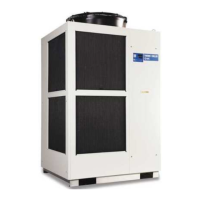
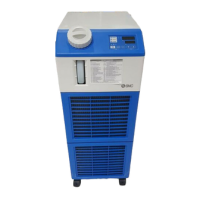
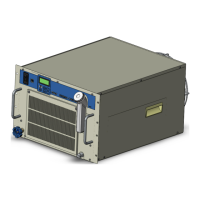
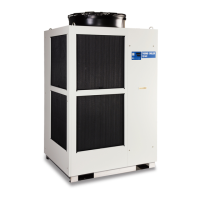

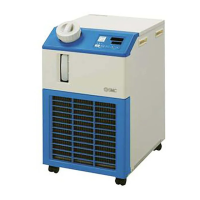
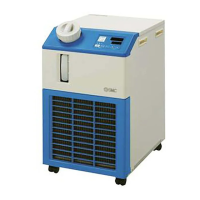
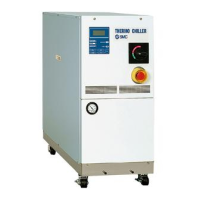
